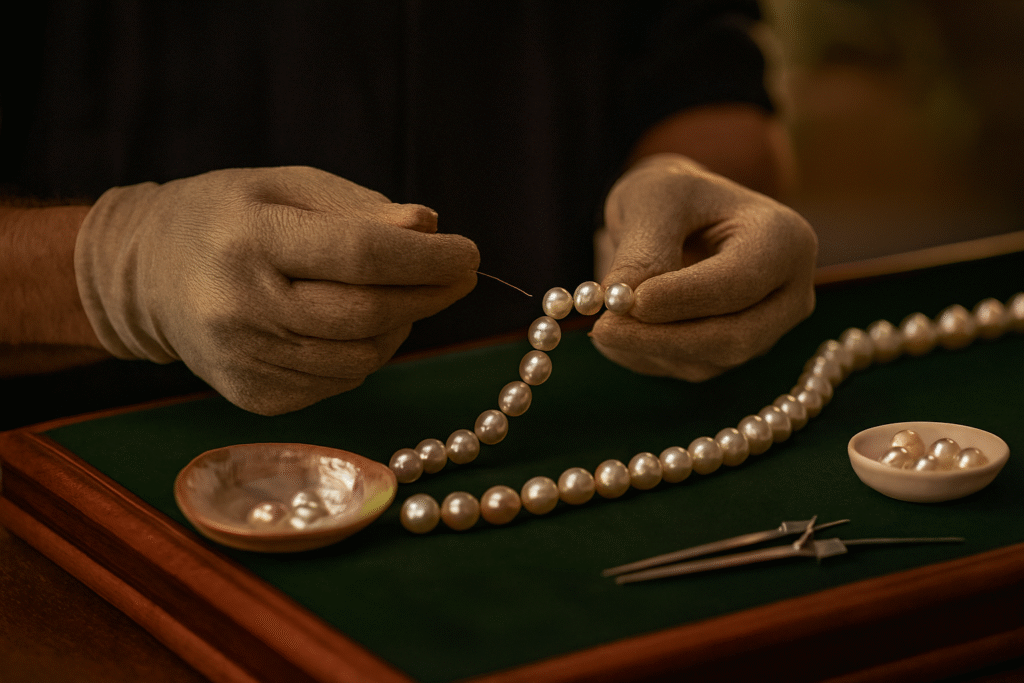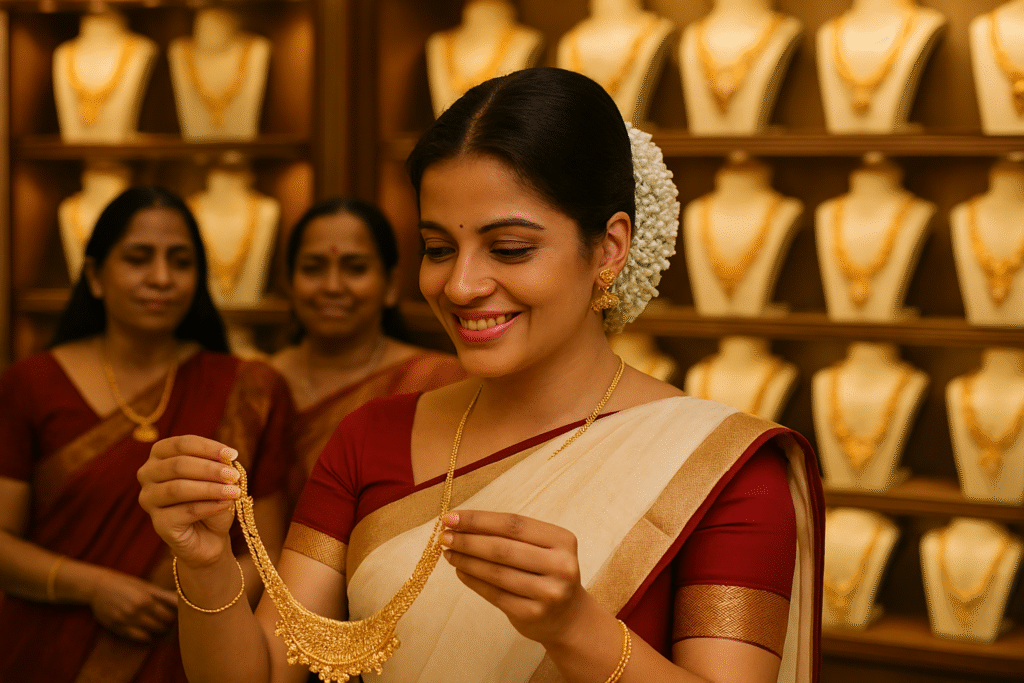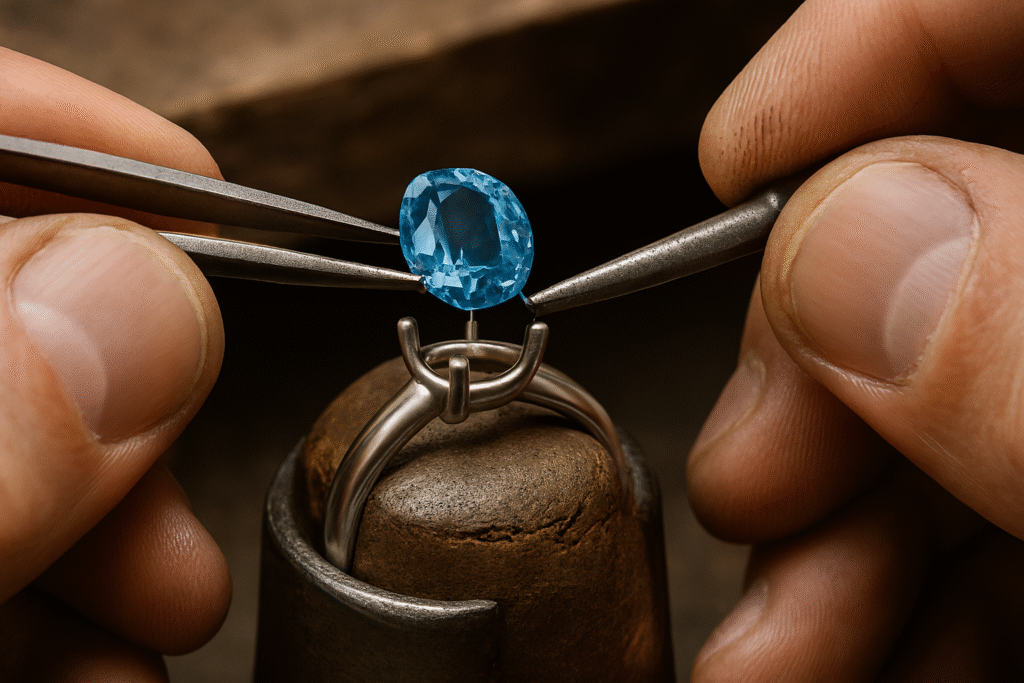A Paspaley Strand is more than jewelry. It is a legacy of craftsmanship refined over decades. Each strand is created through a balance of precision, patience, and artistry. From pearl marking and drilling to stringing and clasp design, every detail reflects mastery.
Pearl Grading: The Five Virtues
To begin with, each pearl is graded with care by master graders. The evaluation is based on five virtues:
- Lustre
- Complexion
- Shape
- Size
- Colour
As a result, pearls chosen for a strand create perfect harmony in rhythm, tone, and brilliance.
Learn more about pearl grading standards to understand why quality matters when buying pearls.
Pearl Matching: Visual Flow
A strand is built pearl by pearl. For instance, some strands come from one harvest. On the other hand, others are assembled over many years. Matching pearls requires patience and skill.
Special designs such as the Rhapsody, Wild, and Delfini combine cultured pearls with keshi pearls. Even so, no two pearls are identical. Because of this, their natural variations must still create a flow. This way, the trained eye of a pearl expert makes all the difference.
Explore the difference between cultured pearls and natural pearls for deeper insight.
Pearl Marking and Drilling: Balance by Hand
Before drilling, each pearl is carefully marked. After that, drilling is performed with precision. For this reason, every pearl sits in balance within the strand.
The Clasp: A Signature of Security
Since 1989, Paspaley has designed its key-end clasp. In fact, this clasp opens and closes securely while remaining discreet. A gemstone near the clasp bears the Paspaley hallmark, guiding the wearer by touch.
At the same time, the clasp pearl can be detached and worn separately on a leather chain. That means the strand offers both elegance and versatility.
Stringing and Knotting: Tension and Grace
Stringing is as important as the pearls themselves. For example, the right tension allows strands to drape elegantly while protecting each pearl. Shorter strands are strung tighter for structure, while longer strands are designed with more fluidity.
In the same way, Paspaley’s proprietary method improves durability while keeping the refined look intact.
The Paspaley Method: Craft and Heritage
From the soundless click of the clasp to the hidden tension in the string, every detail is shaped with intention. In the end, a Paspaley Strand is where rare pearls and skilled hands meet to create a timeless treasure.
Discover how South Sea pearls compare to other pearl types if you’re choosing the perfect strand.



